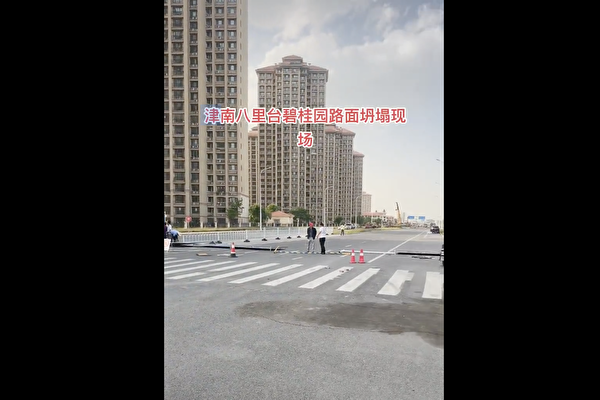A research report published in the journal “Science” on Friday (April 18) revealed that nearly half of China’s major cities are experiencing “moderate to severe” subsidence, with Beijing having the fastest sinking rate according to national satellite data.
The report indicated that the land subsidence rate in 45% of Chinese cities exceeds 3 millimeters per year, with 16% of cities experiencing subsidence rates surpassing 10 millimeters per year.
Beijing is one of the fastest sinking cities in the country, along with neighboring Tianjin. Last year, several roads in Tianjin suddenly cracked, leading to the evacuation of over 3,000 residents from high-rise apartment buildings.
Ground subsidence has resulted in China losing over 7.5 billion yuan (approximately $1.04 billion) annually, and by the next century, nearly a quarter of coastal land is projected to be below sea level, posing a greater risk of flooding for hundreds of millions of people.
The research team led by Ao Zujing, deputy researcher at the Beidou Research Institute of South China Normal University, warned that with China’s urban population exceeding 900 million, even a small amount of land subsidence could pose a significant threat to urban life.
Various factors contribute to the subsidence of these cities, including the immense weight of buildings and infrastructures, groundwater extraction from urban aquifers, as well as activities like oil drilling and coal mining, all of which lead to soil and rock compression or collapse.
Robert Nicholls from the Tyndall Centre for Climate Change Research at the University of East Anglia in the UK, as quoted by Reuters, emphasized that this is a nationwide issue for China rather than just a localized problem.
Subsidence issues are not unique to China. Nicholls pointed out that sinking cities can learn from Tokyo’s experience, where the city subsided approximately 5 meters (16 feet) before the ban on groundwater extraction in the 1970s.
Nicholls stressed the importance of addressing subsidence concerns and highlighted the need to focus on adaptation and embankment strategies in dealing with these challenges.
So, the issue of subsidence requires serious attention, and while it may be difficult to prevent all subsidence, discussions on adaptive measures and embankment construction are crucial in mitigating the impact.

